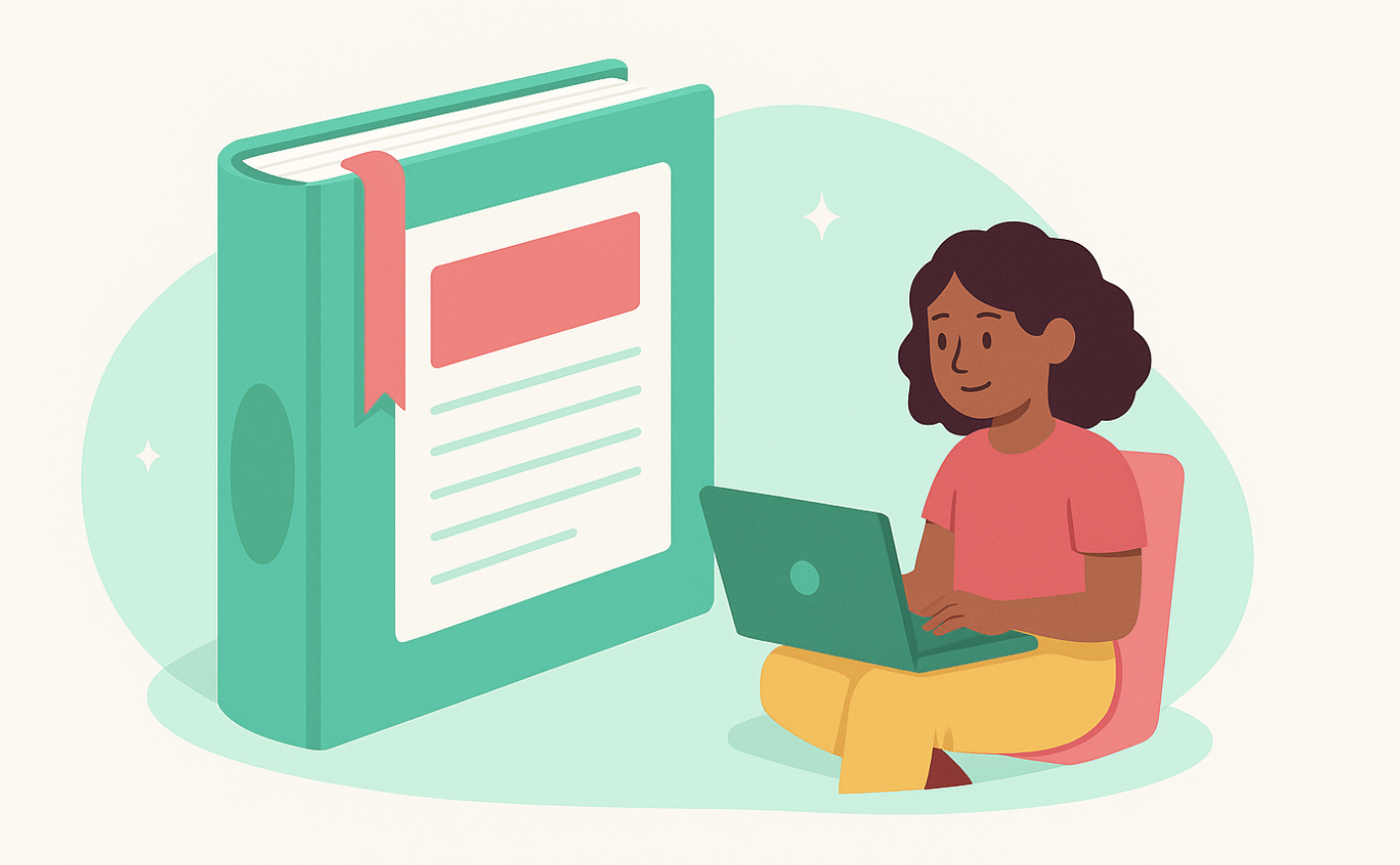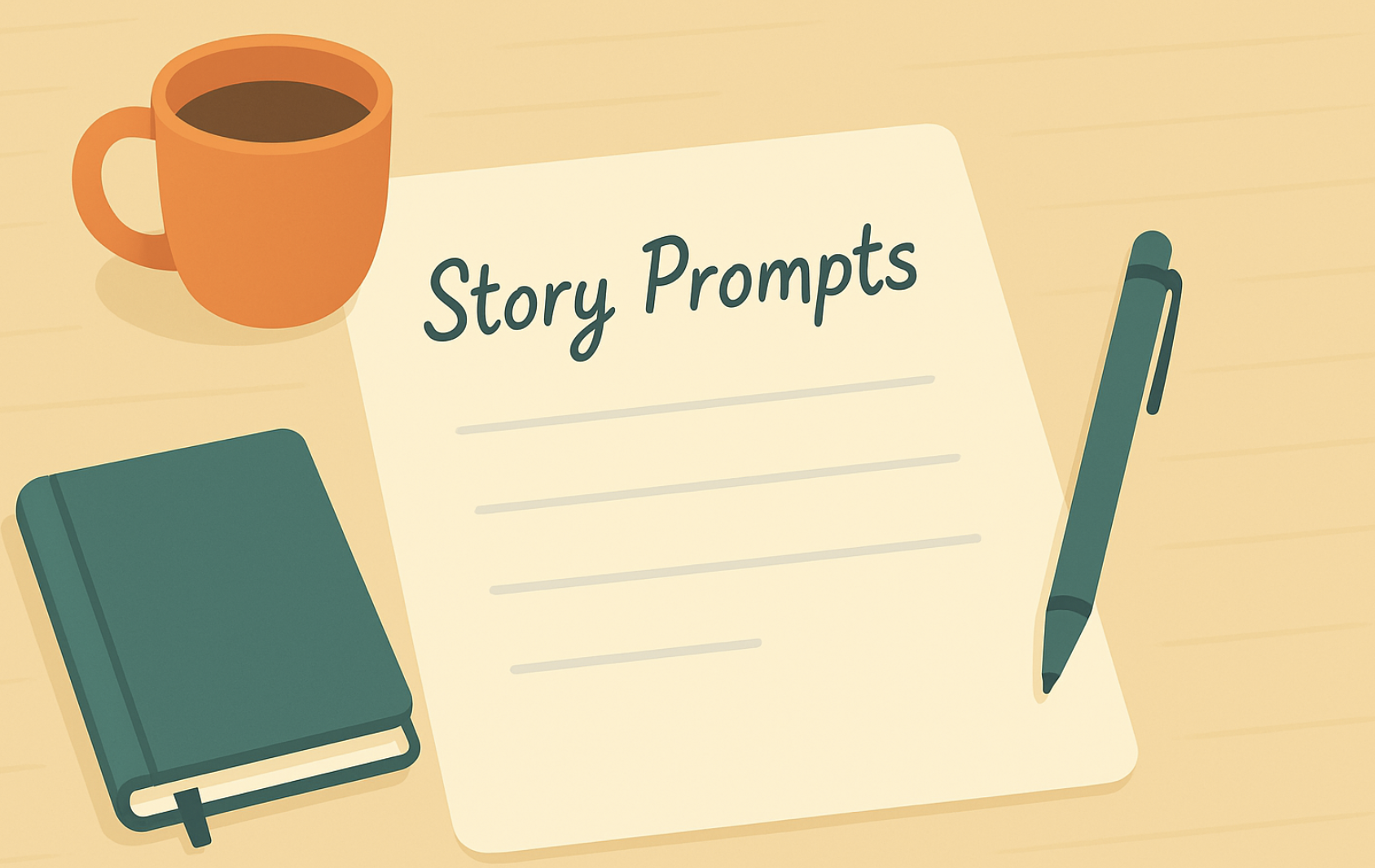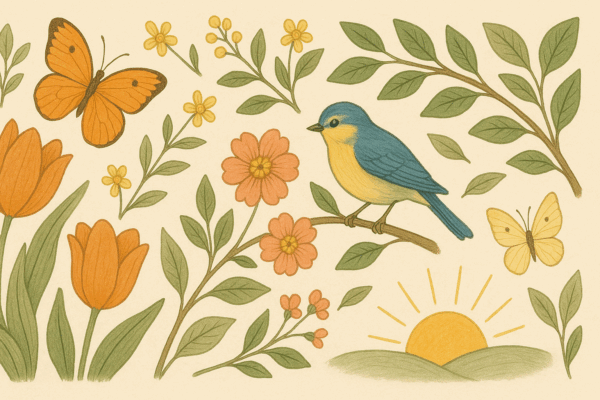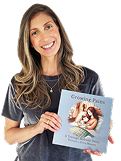Ever finished a book’s first page and instantly knew you couldn’t put it down? That’s the magic of a great story hook. It’s that electric moment when the first few words pull you in, demanding your attention and igniting your curiosity. But not all hooks are created equal—some lure you in, while others leave you wondering what the point was in the first place. So, how do you craft a hook that’s irresistible? The answer lies in understanding what makes a great story hook.
A story hook is more than just a catchy opening line—it’s your ticket to keeping the reader engaged. Think of it as the first impression of your entire narrative: it needs to be compelling, intriguing, or even just a little mysterious to grab attention. If done right, a well-crafted hook sets the tone for your story, ignites curiosity, and ensures the reader won’t want to put the book down.
In this article, we’ll dive into some of the best and worst examples of story hooks—unpacking their secrets and showing you what works. Whether you’re writing your next novel or crafting a short story, these examples will inspire you to write openings that leave your readers eagerly turning pages. Ready to hook them from the first line? Here are some great examples of story hooks:
1. The Classic “Question” Hook
Curiosity Didn’t Kill the Cat — It Hooked the Reader!
A great question can work wonders when it comes to drawing readers in. After all, who doesn’t love a good mystery? The beauty of the question hook is its ability to spark curiosity. A well-placed question doesn’t just introduce a plot; it invites readers into the unknown, making them eager to keep reading to find out the answer. The promise of an unresolved query is like a dangling carrot—it keeps them hungry for more.
Take this story hook example: “What if everything you thought you knew about your life was wrong?”
- Suddenly, you’re hit with a huge, game-changing idea. The question is simple, but it instantly flips the reader’s world upside down. What could it mean? How will the character respond? What truths are yet to be revealed? The power lies in the promise of revelation, creating a magnetic pull that keeps the reader hooked.
Why does this work so well? It creates an immediate sense of mystery and urgency. The reader is now compelled to keep going, eager for the answers that will unravel the confusion the question introduces.
- If you’re going to kick off with a big question, be sure to provide a satisfying answer by the end of the story. Without resolution, you risk leaving your readers frustrated instead of intrigued. So, make sure you have an intriguing answer up your sleeve to reward their curiosity!
2. The Action-Packed Hook
Buckle Up: Things Are About to Get Wild!
There’s no better way to kick off a story than with a burst of energy. The action-packed hook does just that—plunging the reader straight into a high-stakes moment. This type of hook throws the reader into an intense scene filled with chaos or conflict, making it impossible to look away. Whether it’s a chase, a fight, or a life-or-death situation, action hooks create immediate tension, and tension equals engagement.
Consider this story hook example: “The sound of screeching tires was the last thing Maria heard before everything went black.”
- This opening hits the ground running. You’re immediately thrust into a dramatic moment. Who is Maria? Why is she in danger? What happens next? It’s all left hanging, and that’s exactly what makes you want to keep reading.
Why does this work so well? It grabs the reader’s attention by dropping them straight into the heart of the action. By starting with a moment of suspense or danger, you create an irresistible need to know how the situation will resolve.
- While action hooks are effective, they need to serve the story. They should not feel like an arbitrary scene just thrown in for excitement. Make sure the action aligns with the larger narrative and that it sets the tone for what’s to come. After all, action without purpose is just noise!
3. The Vivid Setting Hook
Welcome to the World You Never Knew You Needed
Sometimes, the most captivating thing in a story isn’t the character or the plot—it’s the world itself. A vivid setting hook transports readers to a completely new environment, drawing them in with rich, atmospheric details that create a sense of immersion. When done right, the setting becomes a character in its own right, influencing the mood and tone of the entire narrative.
Take this story hook example: “In the fog-covered city of Grendale, the only sound was the crunch of boots on wet cobblestones.”
- From the very first sentence, the reader is plunged into a gritty, mysterious world. The fog, the sound of boots—these details set the stage for a story brimming with intrigue and perhaps danger. The setting isn’t just a backdrop; it’s an active part of the narrative, helping to shape the atmosphere and fuel curiosity.
Why does this work so well? A strong setting hook pulls readers into a unique world, making them feel as if they’ve stepped into a place they’ve never been before. It ignites the imagination and invites the reader to explore the landscape alongside the characters.
- Make sure your setting contributes to both the mood and conflict of the story. The world around your characters should not just look interesting—it should feel alive, influencing the plot and echoing the themes of your narrative. After all, a well-crafted setting can make the story unforgettable.
4. The Character Introduction Hook
Meet the Hero Who’s Anything But Ordinary
Sometimes the best way to hook a reader is by introducing them to a character who’s anything but ordinary. The character introduction hook works by presenting a quirky, intriguing, or unforgettable character right from the start. Whether they have an unusual talent, a strange habit, or an intriguing backstory, these characters spark curiosity. Readers immediately want to know more about them—what makes them tick, what drives them, and what kind of journey they’ll undertake.
Take this story hook example: “Harry had never met a dog he couldn’t talk to. It’s how he ended up in a world of trouble.”
- This opening does a couple of things right. First, it introduces an unusual, memorable character with an unexpected ability—talking to dogs! And second, it hints at a larger, possibly chaotic adventure to come, leaving readers wondering how Harry’s gift will play out in the story.
Why does this work so well? Interesting characters pull readers in because they’re compelling and full of potential. People love to explore the complexities of characters, and when they encounter someone who stands out from the crowd, it makes them eager to dive deeper into their world.
- While quirky characters are fun, make sure they’re multidimensional. A character shouldn’t just be a gimmick or a one-note stereotype. They should feel real, with strengths, weaknesses, and depth that keep the reader invested in their journey.
5. The Shocking or Surprising Statement Hook
Don’t Just Stand There — Your Jaw’s About to Hit the Floor
A shocking or surprising statement is like a literary jolt—it grabs the reader’s attention immediately and makes them stop, reread, and question everything they thought they knew. This hook sets the tone for the unexpected, preparing the reader for a story that’s anything but ordinary. By starting with an outrageous or shocking statement, you create an instant intrigue that compels the reader to continue on to find out why things are the way they are.
Consider this story hook example: “The day Marcus was born, he was already dead.”
- This line is guaranteed to make any reader pause. What does that even mean? How is that possible? It’s an immediate punch to the gut, pulling the reader into a strange and mysterious world. The absurdity of the statement makes the reader desperate to understand its context and how it connects to the rest of the story.
Why does this work so well? Shocking statements demand attention. They evoke curiosity and make readers want to uncover the twist or truth behind the initial surprise. It forces them to keep reading, eager for answers.
- While this type of hook can be powerful, it’s crucial that the statement is supported by the narrative. If the reader feels like the shocking statement was just thrown in for effect, it could feel like a cheap stunt. Make sure it fits the story and the eventual resolution provides the necessary payoff.
6. The Unsolved Mystery Hook
They Knew It Was Coming, But No One Was Ready
There’s something inherently compelling about an unsolved mystery. The mystery hook thrives on introducing a question or event that demands answers, making the reader feel like they’re embarking on a journey alongside the characters to uncover the truth. It draws them in with the promise of suspense, making them eager to discover the backstory and the secrets waiting to be revealed.
Take this story hook example: “The letter arrived on a Tuesday, three years after her father’s death.”
- This hook is dripping with intrigue. Why is the letter arriving so late? What could it possibly contain? The reader is immediately hooked by the unsolved mystery, wanting to know more about the significance of this delayed letter and its connection to the character’s father. The unanswered questions propel the reader forward, keeping them engaged and invested in finding out what happens next.
Why does this work so well? A well-crafted mystery draws readers in by offering just enough information to intrigue them, but not enough to satisfy their curiosity. It invites the reader to be a part of the discovery, turning each new piece of information into a satisfying breadcrumb that leads to the ultimate resolution.
- While creating a mystery hook, be sure to provide subtle clues along the way. These hints should engage the reader’s curiosity without giving too much away too soon. Balancing mystery with revelation keeps the tension high and the reader eager to turn the page.
7. The Internal Conflict Hook
The Battle Inside — And It’s Just Getting Started
Internal conflict is one of the most powerful tools in storytelling because it taps into the deep, universal struggles we all face. The internal conflict hook dives into a character’s mind, revealing their emotional turmoil, difficult choices, or moral dilemmas right from the start. By starting with an inner battle, you immediately make the character more relatable and complex, which draws readers into the story on a deeper level.
Take this story hook example: “Emily had two options: tell the truth and lose everything, or lie and lose herself.”
- This hook immediately places the reader in the middle of Emily’s inner turmoil. It’s a stark choice, and the weight of her decision makes us want to know more—how will she choose? What’s at stake? The hook makes the character’s conflict immediate and relatable, and it sets up a tension that will carry through the entire story.
Why does this work so well? Internal conflicts humanize characters and make them more accessible to readers. We’ve all faced tough decisions, and seeing a character grapple with their own emotional battles helps us connect with them. As the story progresses, readers will stay invested in the character’s journey to resolve their conflict.
- To make the internal conflict more immediate, show it through the character’s actions or inner thoughts. Don’t just tell the reader they’re struggling—let them feel it in real-time, whether through body language, dialogue, or emotional reflection. This heightens the sense of urgency and keeps the reader hooked.
8. The Dialogue Hook
The First Words You Say Can Change Everything
Sometimes, a well-crafted line of dialogue can do more than just introduce a character—it can immediately set the tone, spark curiosity, and reveal key details about the plot or character. A dialogue hook is a powerful tool because it pulls the reader directly into the conversation, offering a glimpse into the story’s world and the characters’ motivations, often with just a few carefully chosen words.
Take this story hook example: “I’m not saying I killed him, but I did make sure he never walked again.”
- This line is bold, audacious, and packed with mystery. Right away, it gives the reader insight into the character’s personality—someone with a sense of humor, but also a dark side. It raises questions: Who is the speaker? What did they do? How did they end up in this situation? This single line compels the reader to keep going to uncover the full story.
Why does this work so well? Dialogue is a direct window into a character’s thoughts, emotions, and intentions. By starting with a striking or witty line, you immediately engage the reader and spark their curiosity about both the character and the unfolding plot. It gives the reader a taste of what’s to come and establishes a connection between them and the character.
- For a dialogue hook to be effective, it must feel authentic. It should align with the character’s voice, personality, and motivations. Whether it’s humorous, serious, or mysterious, the dialogue should also serve to reveal something critical about the character or the story’s direction.
9. The Flashback Hook
You Don’t Know What’s Coming — But They Do
A flashback hook is a clever way to tease readers with a glimpse of the past, offering crucial context or foreshadowing that heightens the drama of the present. Starting with a flashback doesn’t just provide backstory—it creates an air of anticipation, hinting at an event that will come full circle as the story unfolds. This technique immediately raises questions: What happened? How does it connect to the present? And why is it important?
Take this story hook example: “The first time they met, it was raining. The second time, it nearly killed them both.”
- This line draws readers in with two distinct images: the first meeting, mysterious and charged with the promise of a future connection, followed by a second meeting that is dangerous and life-threatening. The flashback hooks the reader by creating immediate intrigue—what is this story really about? Why does the second meeting carry such high stakes?
Why does this work so well? Flashbacks add layers to the narrative, helping readers understand the motivations, relationships, or events that shape the present action. By teasing a past incident or moment, you make the reader feel like they’re uncovering a deeper story, one that connects past actions with the current conflict.
- Use flashbacks sparingly to avoid overwhelming the reader. They should never be a random narrative device but should serve to enhance the story by adding context, depth, or foreshadowing. The goal is to make the present-day action feel more meaningful and urgent.
10. The End-of-the-Rope Hook
Strapped In and Holding On — It’s Too Late to Turn Back
The end-of-the-rope hook is a high-stakes, tension-filled opener where the character is pushed to the brink—physically, emotionally, or mentally. It’s that pivotal moment when they’re facing a life-changing decision or an overwhelming situation with no clear way out. The intensity of the moment is what grabs the reader, making them desperate to know how the character will navigate the crisis. When it’s all or nothing, the reader is hooked, because the stakes are high and the outcome is uncertain.
Take this story hook example: “There was no way out. Ben had only one choice left, and it would either save or destroy him.”
- This hook presents the reader with a character at a crucial crossroads. Ben is facing a decision that’s clearly life-altering, and the outcome could swing either way. The tension is palpable, and the reader is immediately invested in knowing what choice Ben will make, what consequences will unfold, and how everything will resolve.
Why does this work so well? It places the character in a moment of great peril or dramatic choice, with high stakes that make the reader anxious to find out how it will play out. The urgency and tension create a sense of immediacy, ensuring the reader won’t put the book down until they see what happens next.
- While the tension is essential, make sure the resolution to the situation is equally compelling. If the payoff doesn’t live up to the high stakes set by the hook, the emotional investment may fall flat. Keep the momentum going with a resolution that matches the intensity of the setup.
Story Hooks in Audiobooks
The magic of a great hook isn’t limited to the page—it’s just as vital in audiobook creation. In fact, the opening lines of an audiobook might carry even more weight, since listeners often decide within the first few minutes whether to keep going. A vivid, intriguing hook gives narrators the chance to lean into tone, pacing, and emotion, creating an instant connection with the audience.
Think of it this way: a suspenseful pause, a sharp piece of dialogue, or a sensory-rich description doesn’t just engage the imagination—it comes alive in the narrator’s voice. That first moment sets the stage, just as it does in print, but with the added intimacy of performance. In a world where attention spans are short, a well-crafted story hook delivered through audio can be the difference between a listener finishing the book—or moving on to the next.
Now, Reel Them In!
Starting your story with a compelling hook is not just important—it’s essential. The right hook can make all the difference in whether your readers keep turning the pages or put the book down. It sets the tone, sparks curiosity, and draws readers into the world you’ve created, making them eager to discover what happens next. A great hook can take many forms, whether it’s a question, action, character introduction, or something else entirely. The key is to find what resonates with your story and your unique voice.
Now that you’ve seen some of the most effective story hook examples, it’s time to get creative! Experiment with these hooks and adapt them to fit your own narrative. Don’t be afraid to try something new, and remember: the right hook will not only grab attention but will also pull readers deeper into your story.
If you’re looking for more support on your writing journey, Spines offers a variety of services to help you refine your craft. Whether you need a professional editor or feedback on your story hooks, we’re here to help you unlock your full potential. Let us guide you to the next level of storytelling!
FAQs – Story Hook Examples
Q1: How do you start off a hook?
To start off a hook, you should focus on creating an immediate connection with your reader. This could be done by posing a question, starting with an interesting fact, painting a vivid scene, or introducing a compelling character. The goal is to spark curiosity or emotion, making the reader want to keep reading. Begin with something unexpected, engaging, or thought-provoking to draw them in.
Q2: What is an example of a hook in a narrative essay?
An example of a hook in a narrative essay could be: “The moment the alarm blared, I knew my life was about to change forever.” This creates an immediate sense of tension and intrigue, encouraging the reader to want to know what happens next.
Q3: What is a weak hook?
A weak hook is one that fails to grab the reader’s attention or fails to make a meaningful connection with them. This could be something too vague, overly general, or not intriguing enough. For example: “The sky was blue and the sun was shining.” It doesn’t offer anything specific or compelling, and it doesn’t motivate the reader to keep going.
Q4: What is a hook in a story example?
A hook in a story example might be: “As the door creaked open, I realized I had made a terrible mistake.” This instantly sets up conflict and tension, drawing the reader in to learn more about what happens next.
Q5: How to write a hook for a biography?
To write a hook for a biography, start by highlighting a defining moment or a surprising fact about the person’s life. For example: “At age 12, Maria had already accomplished what most people only dream of doing at 40.” This creates intrigue and sets the stage for a compelling narrative about the person’s journey.
Q6: How long should a hook be?
A hook should be short and concise—usually one to two sentences. It needs to be long enough to pique the reader’s interest but brief enough to keep their attention. Aim for something snappy that sets the tone for the rest of the piece, without overwhelming the reader with unnecessary details.








